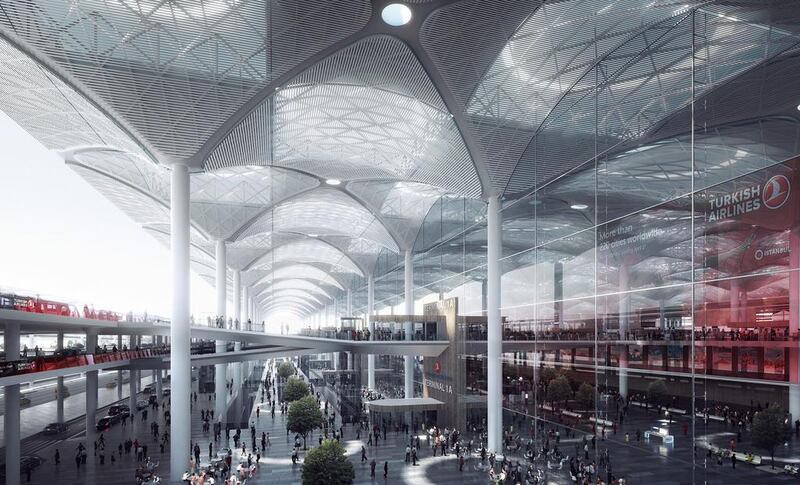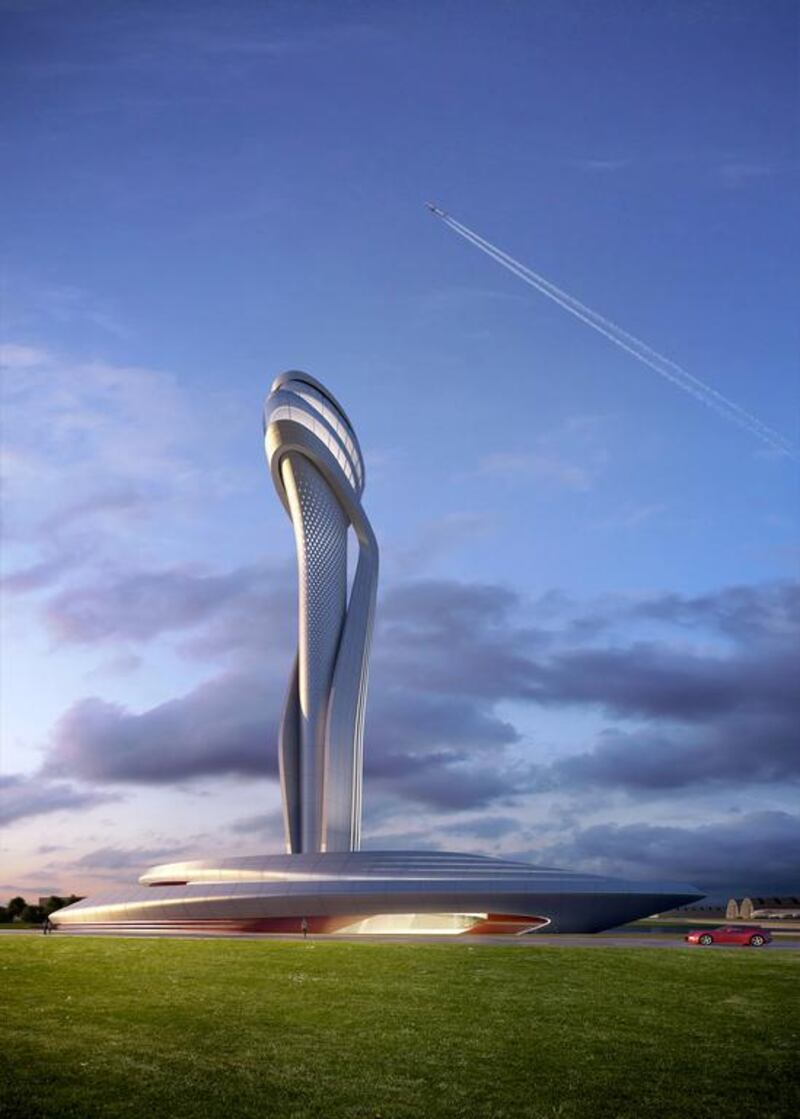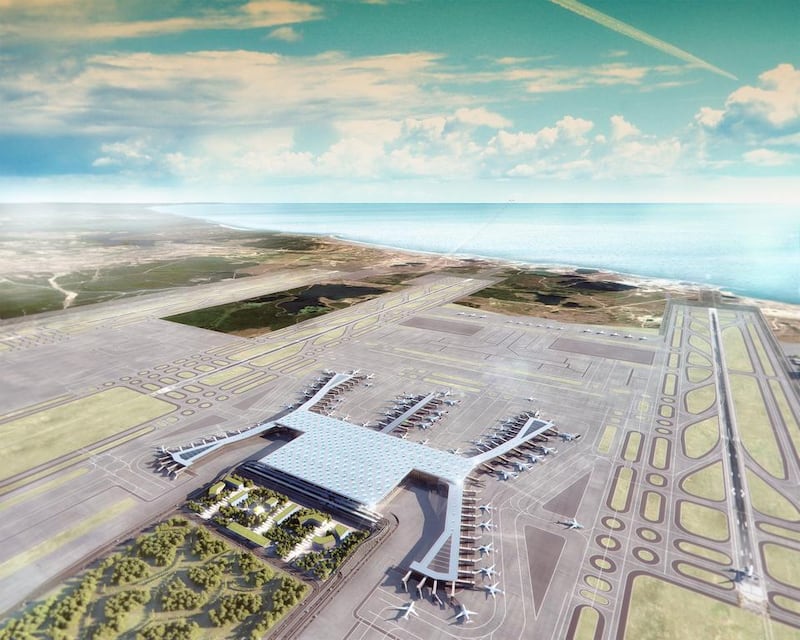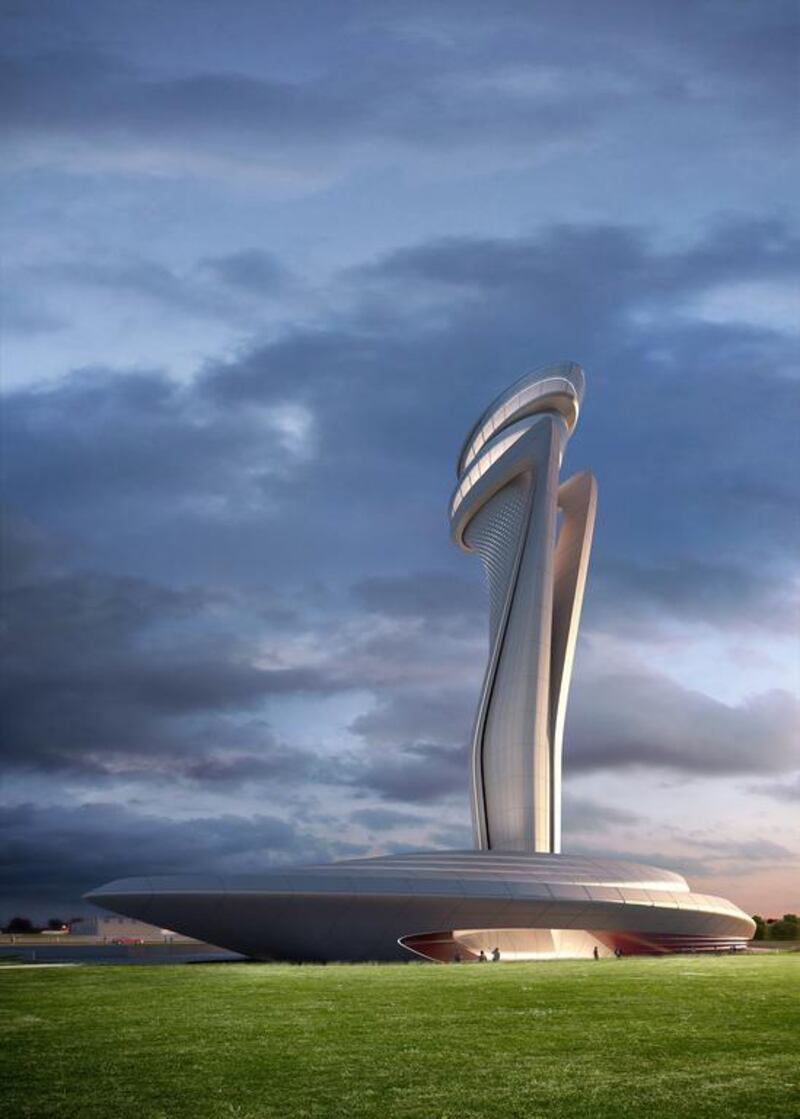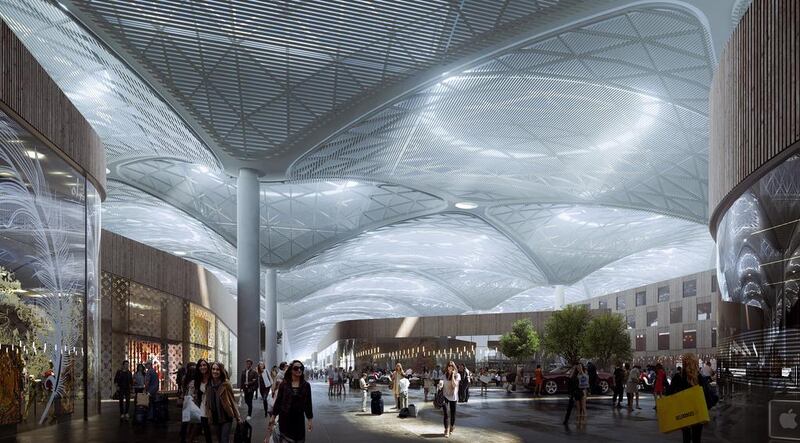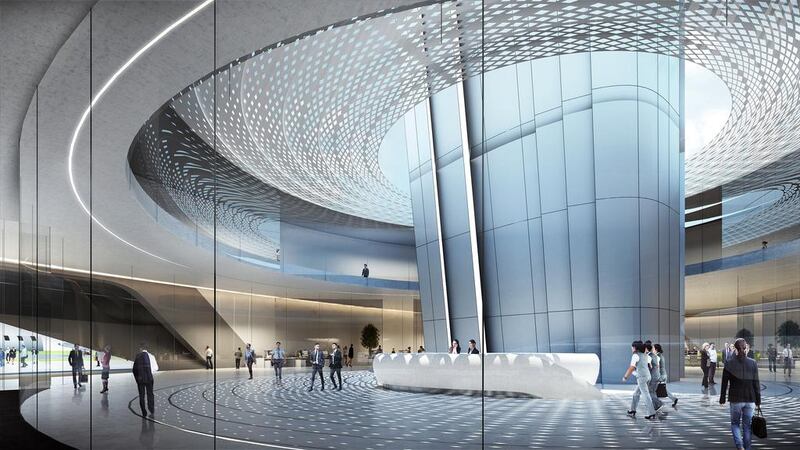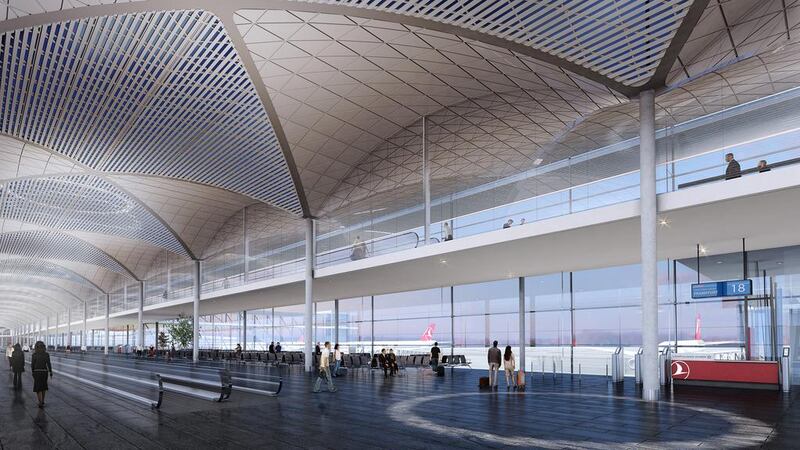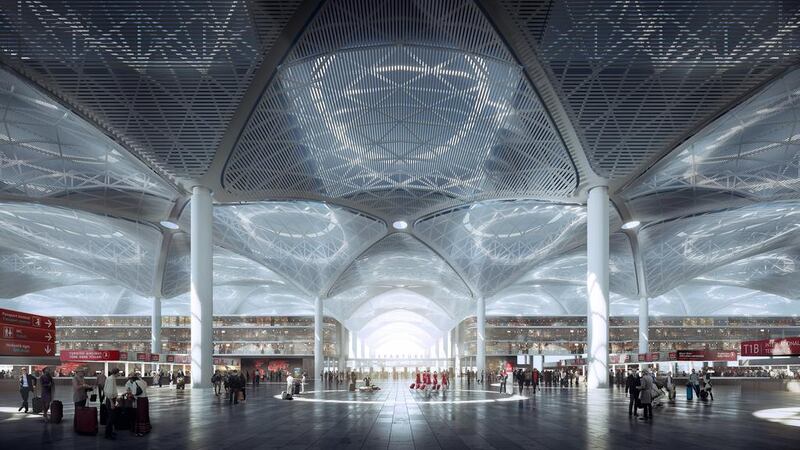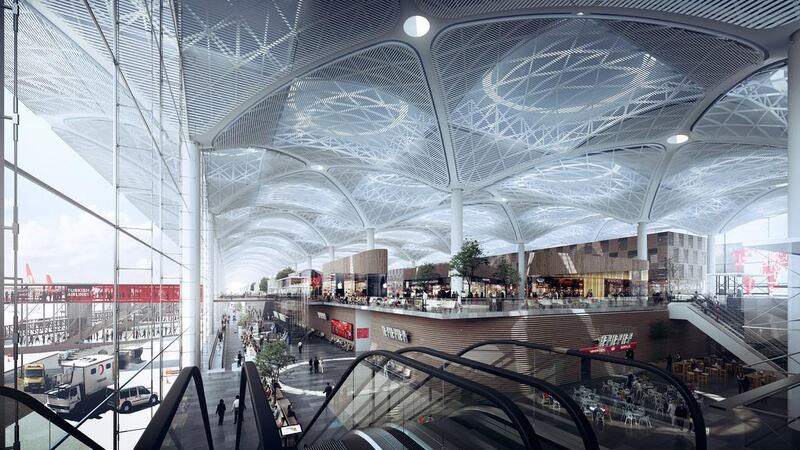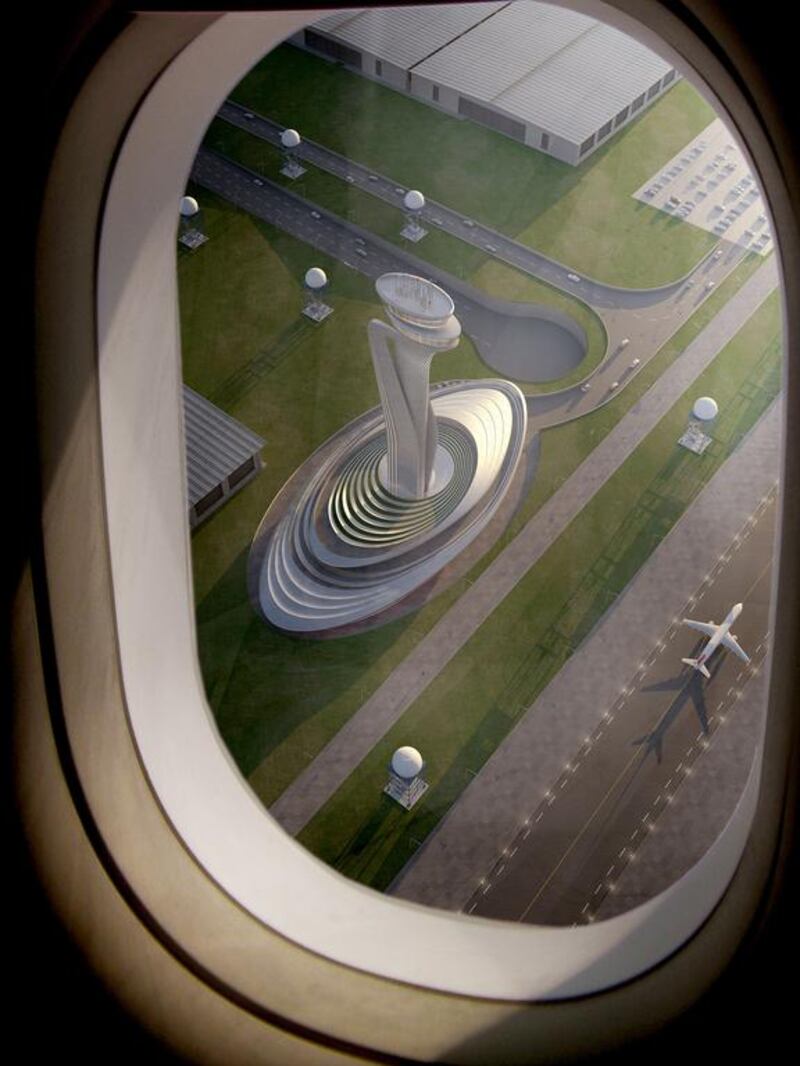The latest designs for Istanbul's newest airport – aptly called Istanbul New Airport – have been released, this time for its air traffic control tower. Designed by the US firm Aecom and the leading Italian automotive design company Pininfarina, the 95-metre structure is an elliptical tower designed to resemble the tulip, a Turkish symbol.
The new design – which beat away competition from global architects such as Zaha Hadid – will act as a crowning glory to the passenger terminal design from the architects Grimshaw and Nordic.
“We were looking for a striking design fit for a 21st-century airport while remaining sensitive to Istanbul’s unique heritage,” says Yusuf Akçayoglu, the chief executive of Istanbul Grand Airport, the company responsible for the development.
As one of the world’s largest aviation projects, Istanbul New Airport has ambitious passenger numbers in mind. The first phase of the project aims to serve 90 million passengers per year, rising to 150 million passengers per annum when the development is complete.
These figures will dwarf Dubai International Airport’s passenger numbers, currently standing at about 70 million passengers per year, according to the Airports Council International. According its operator, the figures until the end of November stood at 70.96 million.
While Istanbul New Airport is 35 kilometres from Istanbul, much farther than the current airport, it has the land needed to fulfil its grand plans. Six runways will be developed and delivered in four phases.
To help business travellers connect to the city, a large plaza and transport hub will be built at the entrance, allowing the airport to integrate with existing rail, metro and bus routes.
Travellers connecting through the hub should also expect a market-leading lounge from Turkish Airlines, which recently added a further 2,400 square metres to its 3,500 square metres lounge in Ataturk airport.
Estimated to be open in late next year, the first phase of the new airport will feature three runways, one main terminal with two satellite terminal buildings, 88 aircraft passenger bridges, hospitals, hotels and even convention centres.
q&a: flying high with rapid growth
Jonny Clark reveals more about Turkey’s Istanbul New Airport:
Why has Istanbul decided to build a third airport?
Turkish Airlines is growing fast, similar to the Middle East’s three airlines, thanks to its strategic position. However, Atatruk International Aiport, built in 1924 and currently the world’s 13th largest by passenger figures, is restricted by the city that surrounds the perimeter, meaning it cannot build an extra runway required to support growth.
How can Turkish Airlines grow so rapidly?
Over the past 12 years, Turkish Airlines has increased its fleet size nearly six times from 55 aircraft to almost 300. The airline still has more than 180 aircraft on order, including both short-haul and long-haul aircraft; these will help the airline to expand its growth further. The carrier already flies to over 110 countries, more than any other airline in the world. The current airport restrictions are slowing the airline’s growth, but these will be removed with the new airport’s capacity.
How much will this new airport cost?
The Turkish government awarded the concession to build and operate Istanbul’s new €10.2 billion (Dh40.45bn) gateway to the IGA Havalimaniletmesi consortium after it agreed to pay it a fee of €22.2bn over the course of the 25-year operating lease.
Tell me more about Terminal 1.
Designed by Grimshaw and Nordic, Terminal 1 will feature a large suspended roof and, when completed, will become the world’s largest airport terminal under one roof, with a gross floor area close to 1 million square metres.
business@thenational.ae
Follow The National's Business section on Twitter
